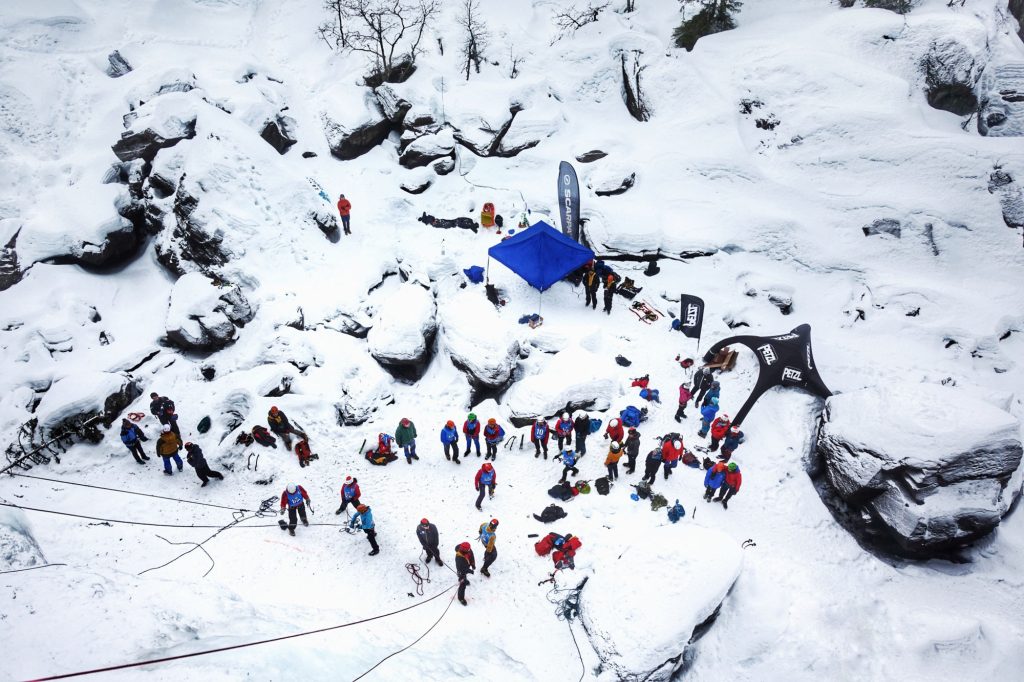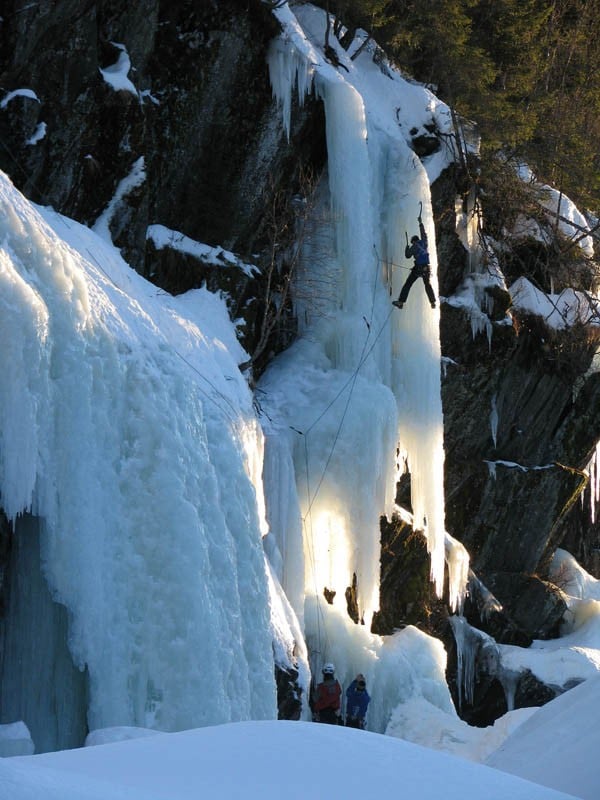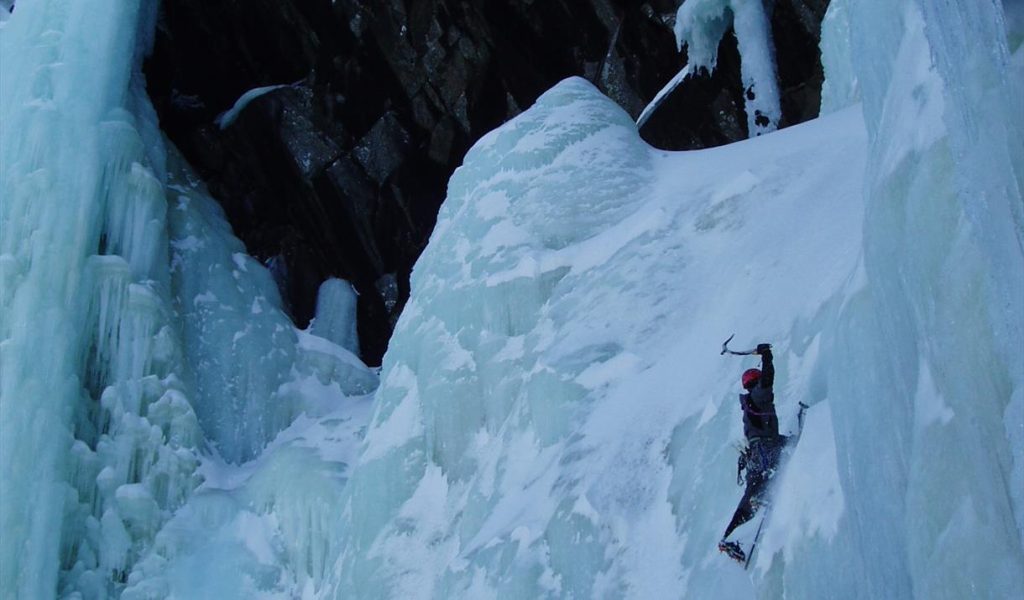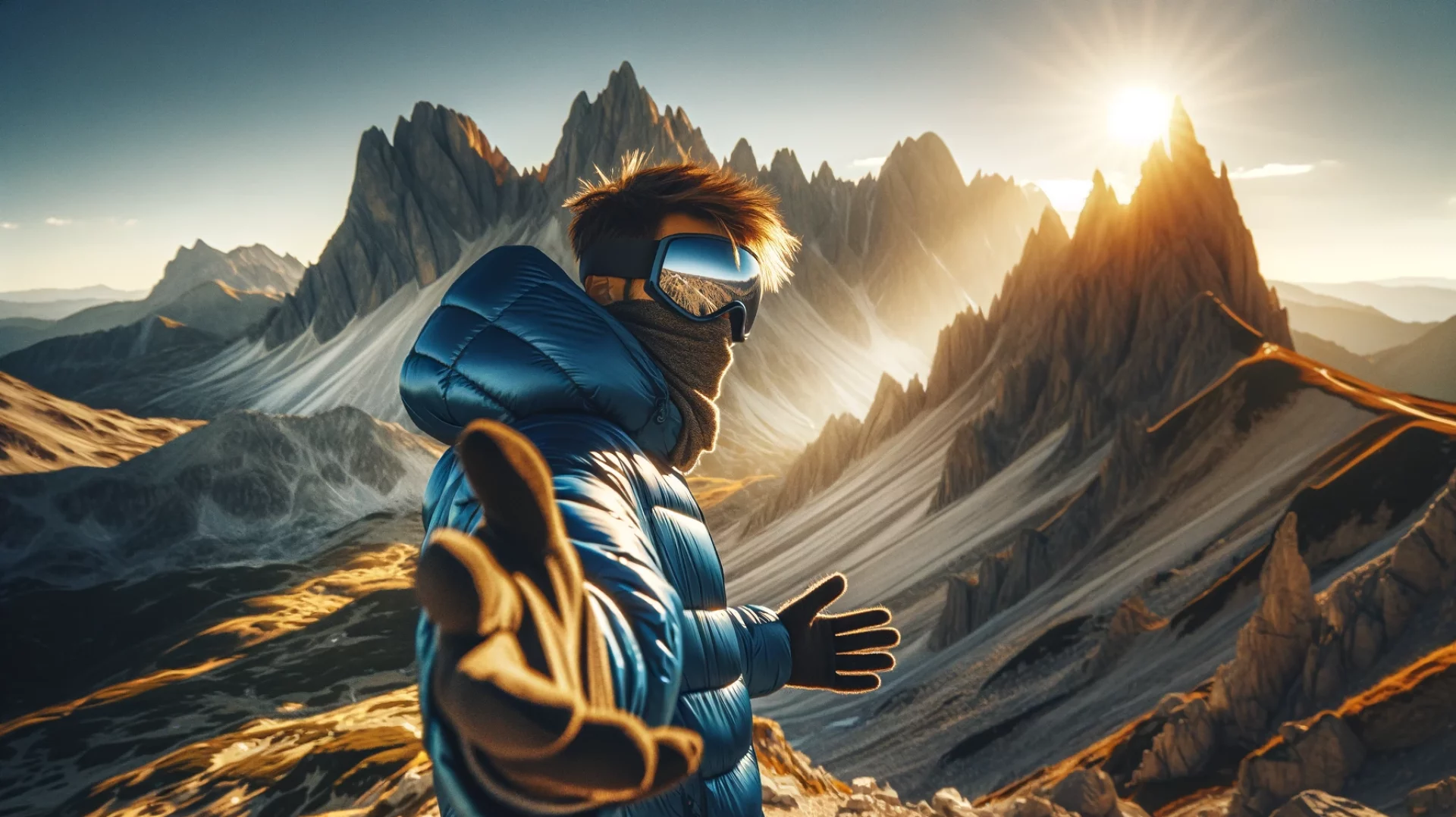Ice Climbing Capital
Nestled in the heart of Norway’s Telemark region, the town of Rjukan is a place where history, nature, and adventure converge. Surrounded by towering mountains and dramatic waterfalls, Rjukan is a destination that feels both timeless and dynamic. But what truly sets this small town apart is its reputation as the ice climbing capital of the world. Every winter, climbers from across the globe flock to Rjukan to test their skills on its frozen cascades, drawn by the town’s unique combination of natural beauty and climbing heritage. Join us as we explore the fascinating story of Rjukan and its icy allure.



A Town Shaped by Water and Ice
Rjukan’s story begins with water. The town is situated in a deep valley, carved by glaciers over millennia, and is surrounded by some of Norway’s most spectacular waterfalls. Among them is the mighty Rjukanfossen, a 104-meter cascade that has long been a source of awe and inspiration. But it’s not just the waterfalls themselves that make Rjukan special—it’s what happens to them in winter.
When the temperatures drop, the waterfalls freeze, transforming into towering walls of ice. These frozen cascades become natural climbing routes, offering everything from gentle slopes for beginners to vertical challenges for seasoned climbers. The combination of reliable ice conditions, diverse routes, and breathtaking scenery has made Rjukan a mecca for ice climbers.
The Birth of Ice Climbing in Rjukan
The history of ice climbing in Rjukan dates back to the early 20th century, when the town was still a bustling industrial hub. Rjukan was founded by the Norsk Hydro company, which harnessed the power of the nearby waterfalls to produce fertilizer. The town’s industrial heritage is still visible today, particularly in the iconic Vemork power plant, which now houses the Norwegian Industrial Workers Museum.
But while industry brought people to Rjukan, it was the mountains that captured their imaginations. In the 1930s, a group of local climbers began exploring the frozen waterfalls around the town, pioneering some of the first ice climbing routes in the area. These early climbers were driven by a sense of adventure and a desire to conquer the icy walls that loomed above their town.
One of the most famous figures from this era is Arne Randers Heen, a Rjukan native who is often referred to as the father of Norwegian ice climbing. Heen’s exploits on the frozen waterfalls of Rjukan earned him a reputation as one of the most daring climbers of his time. His legacy lives on in the routes he established, many of which are still climbed today.
Rjukan’s Rise to International Fame
While ice climbing in Rjukan began as a local pastime, it didn’t take long for the town to gain international recognition. In the 1980s and 1990s, as ice climbing grew in popularity worldwide, Rjukan emerged as a premier destination. Climbers from Europe, North America, and beyond began making the pilgrimage to Rjukan, drawn by the town’s unparalleled ice formations and welcoming community.
One of the key factors behind Rjukan’s success as an ice climbing destination is its accessibility. Many of the climbing routes are located just a short walk from the town center, making it easy for climbers to spend their days on the ice and their evenings enjoying the warmth of local cafes and lodges. The town’s infrastructure has also evolved to support climbers, with gear shops, guiding services, and accommodations catering to the needs of visitors.
But it’s not just the convenience that keeps climbers coming back—it’s the sheer variety of routes. Rjukan offers something for everyone, from gentle ice flows for beginners to steep, technical climbs for experts. Some of the most famous routes include:
- Krokan: A classic beginner’s route, featuring a gentle slope and easy access.
- Ozzimosis: A challenging climb with overhanging ice, named after the legendary climber Ole Johan Øvstedal.
- Søylegangen: A multi-pitch route that takes climbers up a towering column of ice.
The Rjukan Ice Festival: A Celebration of Climbing and Community
Every February, Rjukan hosts the Rjukan Ice Festival, a celebration of ice climbing and winter sports. The festival attracts climbers of all skill levels, from novices trying ice climbing for the first time to world-class athletes pushing the limits of the sport. The event features guided climbs, workshops, competitions, and social gatherings, creating a vibrant atmosphere that embodies the spirit of Rjukan.
The festival is also a testament to the town’s sense of community. Local climbers, guides, and businesses come together to welcome visitors and share their passion for the sport. For many attendees, the Rjukan Ice Festival is more than just an event—it’s a chance to connect with like-minded adventurers and experience the unique culture of Rjukan.
Beyond Ice Climbing: Exploring Rjukan’s Rich Heritage
While ice climbing may be Rjukan’s claim to fame, the town has much more to offer. Rjukan’s history is deeply intertwined with Norway’s industrial and cultural development, and there are plenty of opportunities to explore this heritage.
The Vemork Power Plant and the Norwegian Industrial Workers Museum
The Vemork power plant, once the largest hydroelectric plant in the world, played a crucial role in Norway’s industrial history. Today, it houses the Norwegian Industrial Workers Museum, which tells the story of Rjukan’s industrial past and its impact on the region. The museum also highlights the town’s role in World War II, when it was the site of the famous heavy water sabotage operations aimed at disrupting Nazi nuclear research.
The Rjukanfossen Waterfall and the Krossobanen Cable Car
The Rjukanfossen waterfall is one of Norway’s most iconic natural landmarks. In winter, it transforms into a frozen wonderland, but even in summer, it’s worth a visit. For a bird’s-eye view of the waterfall and the surrounding valley, take a ride on the Krossobanen cable car, the first of its kind in Northern Europe. The cable car offers stunning views and access to hiking trails in the Hardangervidda National Park.
The Sun Mirrors
Rjukan’s location in a deep valley means that the town is without direct sunlight for much of the year. In 2013, this unique challenge was addressed with the installation of sun mirrors, or solspeil, on the mountainside. These mirrors reflect sunlight into the town square, creating a warm and welcoming gathering place even in the depths of winter.
Tips for Visiting Rjukan
If you’re planning a trip to Rjukan, here are a few tips to make the most of your visit:
- When to Go: The ice climbing season typically runs from December to March, with the best conditions in January and February. If you’re not a climber, summer is also a great time to visit, with opportunities for hiking, biking, and exploring the town’s history.
- What to Pack: If you’re planning to climb, make sure to bring warm, waterproof clothing and proper climbing gear. Many local shops offer rentals and guided tours for those who need equipment or instruction.
- Where to Stay: Rjukan has a range of accommodations, from cozy guesthouses to modern hotels. The Rjukan Hytteby cabins are a popular choice for climbers, offering a rustic and communal atmosphere.
Conclusion: The Enduring Magic of Rjukan
Rjukan is a town like no other—a place where history, nature, and adventure come together in perfect harmony. Its frozen waterfalls have made it a global destination for ice climbing, but there’s so much more to discover. From its industrial heritage to its innovative sun mirrors, Rjukan is a town that embraces its past while looking to the future.
Whether you’re scaling an icy wall, exploring a historic power plant, or simply soaking in the beauty of the surrounding landscape, Rjukan invites you to be part of its story. As the ice glistens in the winter sun and the echoes of climbers’ laughter fill the air, it’s easy to see why this small Norwegian town has captured the hearts of so many. Rjukan is more than a destination—it’s an experience, a journey, and a celebration of the indomitable spirit of adventure.


